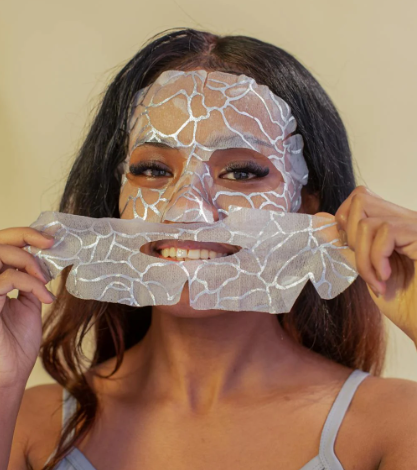
Fresh & Dewy: Water-Based Serums to Keep Skin Calm in Humidity
1. What Makes Humidity a Challenge for Skin?
1.1 Sweat + Sebum = Clogged Pores?
In humid climates, your skin releases more sweat and sebum, creating the perfect breeding ground for pore blockages—think tiny traffic jams of oil and sweat. It’s like your T-zone went wild, forming mini “oil parties” that lead to breakouts.
1.2 Dehydration Can Trigger Excess Oil Production
Surprisingly, your skin might feel shiny not because it’s well-moisturized, but because it’s desperately dehydrated. Dehydration triggers oil glands to overcompensate, leading to a greasy look that feels anything but hydrated.
2. Water-Based Serums 101: What Are They?
2.1 Fast-Absorbing vs. Oil-Based – What’s the Difference?
Water-based serums use water as their main ingredient, so they feel light, sink in quickly, and don’t leave a greasy film. They layer beautifully under your moisturizer and SPF. By contrast, oil-based serums can feel heavier and are better suited to dry or mature skin types CurologyUpCircleTHE STEAM SPA.
2.2 Core Ingredients That Make Water-Based Serums Shine
These serums often include humectants like hyaluronic acid, amino acids, niacinamide, and antioxidants such as vitamin C. These ingredients deliver hydration deeper into the skin—perfect for addressing concerns like dryness, dullness, and uneven tone UpCirclewildernorthbotanicals.comDot & Key.
3. Why Are Water-Based Serums a Perfect Fit for Humid Climates?
3.1 Light, Non-Greasy Texture That Feels Like Dew
Imagine your skin sipping water like a fresh morning dew—hydrated but not weighed down. That’s the feel water-based serums give, especially welcome when everything else feels sticky.
3.2 Deep Hydration vs. Surface Moisture
Unlike some products that merely “sit” on your skin, these serums penetrate through the surface, delivering hydration where it’s actually needed.
3.3 Balancing Oil and Calming Sensitivity
Ingredients like niacinamide and centella aren’t just hydrating—they help regulate oil production and calm inflammation, which is a game-changer when humidity makes your skin oversensitive.
4. Key Ingredients to Look For
4.1 Hyaluronic Acid – The Hydration Sponge
It can hold up to 1,000 times its weight in water, plumping skin and smoothing fine lines instantly. Follow it up with a barrier-friendly cream to lock that hydration in place GlamourNew York Post.
4.2 Niacinamide – Oil Control and Barrier Help
Niacinamide regulates sebum, minimizes pore appearance, and strengthens your skin’s defense—making it ideal for humid conditions.
4.3 Ceramides – Skin Barrier Guardians
Humidity and air conditioning are a double-edged sword—these hero lipids restore your barrier and help skin retain water.
4.4 Calm-Down Botanicals: Green Tea, Centella & More
Think of these as your skin’s home-cooling spray: they soothe heat-induced redness and irritation.
5. Step-by-Step: How to Maximize Water-Based Serum Effectiveness
5.1 Cleanse → Mist → Serum → Moisturizer → (Optional) Oil
Start with clean skin, refresh with a hydrating mist, apply serum, then moisturizer—and if needed, finish with a lightweight oil to seal it all in

5.2 The “Skin Flooding” Technique for Better Absorption
Mist skin lightly after cleansing, apply humectant-packed serum, then lock in moisture with a cream. This layering mimics a flood of hydration that penetrates deeply Real Simple.
5.3 Layer Gently, Don’t Overcrowd
A dab goes a long way. Over-applying can lead to pilling or sticky buildup—keep it light and let each layer absorb.
5.4 Seal It with a Lightweight Gel or Cream
Follow up with a non-clogging gel or water-based cream for that lasting “dewy but not drenched” finish.
6. Handy Tips for Skincare in Humidity
6.1 Carry a Mist for Midday Refresh and Calm
A quick spritz of a soothing mist—especially one with botanicals—gives instant relief and preps skin for other layers of hydration Source Vitál Apothecary.
6.2 Skip Heavy, Sticky Formulas That Clog in Hot Weather
When humidity ramps up, thick creams become your enemy—they trap heat and oil, leading to congestion.
6.3 Handle AC-to-Outdoor Swings with Adjustable Hydration
Transition zones between cold air-conditioning and hot outdoors can shock your barrier. Use water-based hydrating layers to bridge that gap.
Conclusion
Humidity need not spell doom for your skin. Water-based serums offer a breath of fresh air—hydrating deeply, balancing oil, calming sensitivity, and slipping seamlessly into your routine. With the right ingredients and techniques like “skin flooding,” you can keep skin calm, bouncy, and beautifully Fresh & Dewy all season long.
FAQs
- Can oily skin use water-based serums?
Absolutely! They’re lightweight, non-comedogenic, and help regulate oil by hydrating deeply without heaviness. - Is “skin flooding” safe for sensitive or acne-prone skin?
Yes—just patch-test first. A light mist and humectant serum work well, but avoid over-layering if your skin easily reacts. - Do I still need moisturizer after using a water-based serum?
Yes—water-based serums are hydrating, not occlusive. A moisturizer helps seal in that moisture and prevent evaporation.


